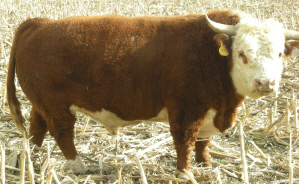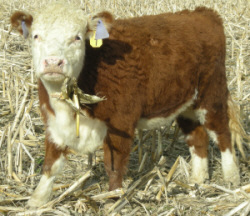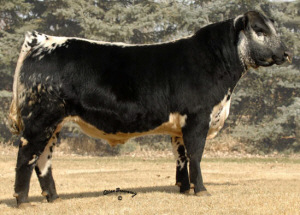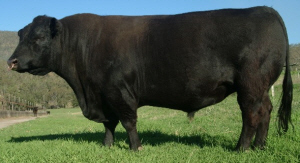



Miniature Hereford
History
The Miniature Hereford has been developed over the last 30 years by selective breeding of stock that was originally imported to the US from England in the early 19th Century. The Miniature Hereford breeding program was started by the Largent family in 1974, whose ranch is located in the Davis Mountains of Texas.  Photo courtesy of Trumbull Prairie Ranch |
The first Miniature Herefords were sold on the open market in 1991. All Miniature Herefords are able to be registered with the American Hereford Society, once they are checked free of the dwarfism gene.
Characteristics
The only difference between a Hereford and a Miniature Hereford is the height, the Miniature has the same body profile in terms of proportion to a full sized Hereford. A Miniature Hereford averages around 107cm (42 inches) in height and weighs around 450kgs (1000 lbs). Apart from that the Miniature Hereford is the same in characteristics as its larger counterpart.Statistics
 Photo courtesy of Trumbull Prairie Ranch |
Comparative
Distribution
Miniature Herefords are now available in many states of the US, Canada and Australia.References (the above information was cited from the following sites)
www.miniatureherefords.net
Australian Lowline Cattle were developed from an Aberdeen Angus herd which was established at the Trangie Research Centre in 1929, they were bred to provide quality breeding stock for the NSW cattle industry.
Seed stock were purchased from Scotland, Canada, America and selected Australian Studs to form the foundation of the herd.
The emphasis at Trangie switched to research in 1963, the Australian Meat Research Committee asked the Trangie Research Centre to conduct a project aimed at establishing the role of performance recording in the breeding program of a herd. Emphasis was given to weight gain and to visual conformation score in the selection of replacement bulls and heifers. The project continued until 1970, pioneering performance testing in Australia, and demonstrating successfully the usefulness of measuring performance in a stud herd.
Seed stock were purchased from Scotland, Canada, America and selected Australian Studs to form the foundation of the herd.
The emphasis at Trangie switched to research in 1963, the Australian Meat Research Committee asked the Trangie Research Centre to conduct a project aimed at establishing the role of performance recording in the breeding program of a herd. Emphasis was given to weight gain and to visual conformation score in the selection of replacement bulls and heifers. The project continued until 1970, pioneering performance testing in Australia, and demonstrating successfully the usefulness of measuring performance in a stud herd.


